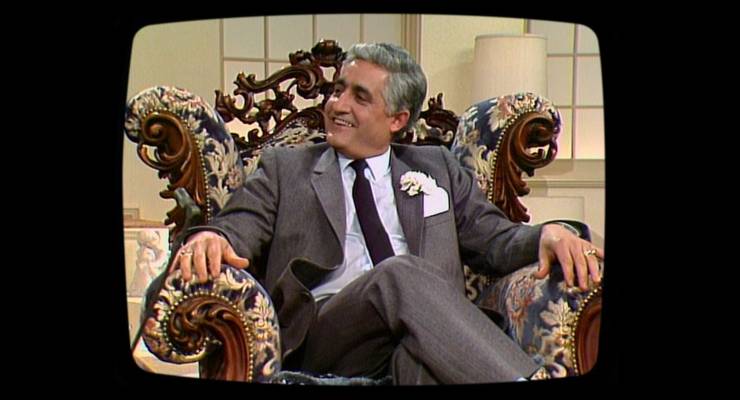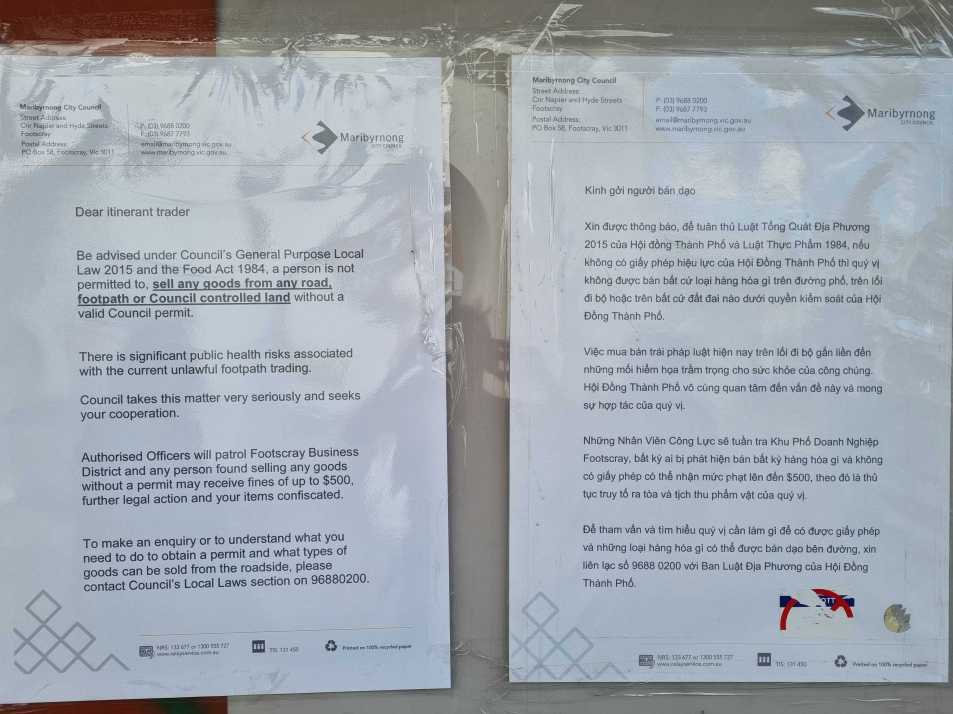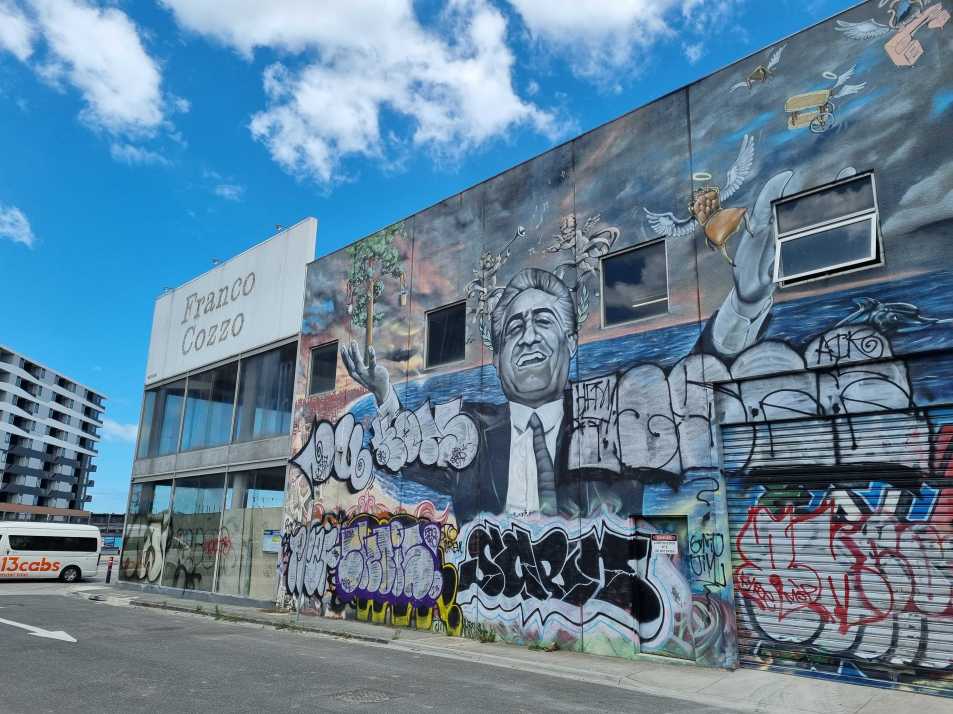
For anyone outside Melbourne, the sincere, spontaneous emotion that has followed the death of a former furniture salesman might be faintly baffling. Franco Cozzo, the flamboyant proprietor of ornate, baroque furniture stores that bore his name has died at the age of 88, but the world that made his life possible, let alone his celebrity, was already gone.
Figures broadly occupying the same space as Cozzo were relatively common until recently. Eccentric showmen acting as the face of a local business in agreeably cheap ads that seemed to come on constantly, often playing to a comically amplified version of their ethnicity — mine growing up was Claudio Versaico’s “Luigi Savadamoni” character from Perth’s WA Salvage ads, and had it been done by an Anglo it would have practically qualified as a hate crime. No doubt readers in other states have their own versions. But as far as I know, none of them came to symbolise what Cozzo did.
Arriving in Melbourne in 1956, Cozzo had heritage from both the Greek and Italian tributaries that flooded into Footscray and its surroundings after World War II, but he came to be thought of as a distinctly Italian type: the shrewd, stylish and flamboyant migrant entrepreneur. Those immaculate suits, that perfectly smooth salt-and-pepper swoosh atop his head, the clouds of cologne he can be seen applying at the opening of Madeleine Martiniello’s 2021 documentary Palazzo di Cozzo.
Both his furniture — baroque, regal, shapely pieces, undulating with gleaming curlicues, which gave his fellow newly arrived southern Europeans access to the old country glamour they could never have afforded in the old country — and his personal success in selling it became emblems of all those post-war migrant hopes. And, at times, their fears. Cozzo’s son, Luigi, was convicted in the 1990s of selling drugs that had been hidden in the Footscray store’s furniture; thereafter Cozzo was often forced to deny rumours that the store was a drug front.
Ten years before SBS existed, he produced and affixed his name to Carosello, an Italian pop music showcase and the first largely non-Anglophone show on Australian television — another way his sense for gaps in a market melded with the loneliness that afflicts first-generation migrants — that formed part of the fabric of a community. Watched from 2023, it’s a glimpse into a whole other world. Not just the matching suits and glinting pompadours of Sergio G and The Flippers, or the heavily British-inflected voice of the host stumbling over the performers’ names, but the sheer fact of such localised community broadcasting taking up a slot on commercial TV (it was on Network 10, back when it had the faintly ominous name of Channel 0).
Of course, part of his appeal, no doubt cultivated by Cozzo himself, is pure kitsch: the sheer lovely strangeness of those old trilingual ads, the colours of the 1980s video and titles both somehow fading and over-saturated, the gauche grandeur of the display rooms.
But it’s more than that. At one time he had three stores, then one, and by the time of his death, none. Palazzo di Cozzo shows faintly heartbreaking footage of him surveying the built-up stock he could no longer shift, and you sense he was mourning then what we are mourning now. He was a man who watched the various strands that had knotted together to create his life’s work — historical chance, demographics and attendant fashions — unravel in his lifetime. Apart from anything else, try to imagine a newly arrived family, with few connections, a working-class skill set and rudimentary English, buying a home 20 minutes from the city centre and filling it with artisanal furniture from Italy. Not just in 2023, but maybe ever again.
“My Italians,” Cozzo says, referring to his customers, “are in the cemetery now.”
In itself, this might be a sad but seemingly inevitable historical shift. Melbourne’s western suburbs are impressively haunted, even by the standards of former industrial hubs; you can barely go a block without encountering faded signage advertising some long-vanished product retreating into a red-brick facade (see: Warren Kirk’s exquisite Westography). Properly done, the store’s conversion to (what else) a brewery could and can retain a rich, bittersweet sense of place and life as it was once lived. But it’s more than that. It’s the sense that as that way of life comes apart, nothing is replacing it.
A little way northeast of the site of the final Cozzo store in Footscray is the Joseph Road Precinct. The giant towers on the banks of the Maribyrnong, built with no regard for the occupants’ ability to access services or green space, stand as monuments to the particularly nihilistic planning regime between 2010 and 2014.
At the same time, abandoned lots bought up by land banking developers have been left to decay all over Footscray for years. This is not some natural process of destruction and renewal, detritus feeding the forest floor. This is more like the scorched earth left by a retreating army. These vanished places form an active, almost corporeal lack, a palpable hole in the air.
Cozzo’s death comes roughly a month after the elderly street sellers who had been hocking produce on Leeds Street for years were suddenly shut down, threatened with fines and legal action by the local council. A much-loved part of Footscray’s crowded tangle of life swept away — health and safety concerns, apparently.

There’s something faintly dystopian about a place simultaneously gentrifying its life away, while maintaining several bleak, arid rubble piles for years on end and hosting abject horrors like the murder committed by a 12-year-old in November.
These events mirror several strains of modern life that begin to total up to something more active than indifference or even greed; there is something almost hateful about it, an abhorrence of organic human bonds.
Though it came about for different reasons, the slow, visible decay of the Franco Cozzo store ran parallel with, and felt like just another part of, that creeping sense of nihilism.
On Thursday, just as the last news crew was leaving, we passed the old furniture store, as we had countless times over the years on our way to the train, or the market, or the pub. Over that time, slowly then suddenly, the sign had faded, the furniture disappeared and the windows were covered up. And the mural of the old showman, who would outlive the world he had promised his customers, receding behind clouds of graffiti.









True. Years ago there was a superb cartoon in Private Eye magazine which showed an office in a tall tower block with a wonderful birds-eye view across a typical city; down below were more tower blocks in the modern urban brutalist mode, multi-lane roads with fly-overs and tunnels jammed with traffic sat in its own smog, open concrete spaces and elevated pedestrian walkways blasted with winds, huge advertising hoardings and so on, with a few tiny ant-like figures trying to get somewhere on foot. In the office with this view, under a sign that says ‘Town Planning’, are two gents in suits, stood gazing down at the view. One says to the other: “You know what I really hate? People!”
Great stuff, Charlie. Thanks so much for the Westography link.
Excellent portrait of a bloke and his fading milieu. I don’t live in Melbourne, I’ve never seen Cozzo’s ads, but I can identify with what’s happening. If there’s profit in forcing decay, and in crushing old ways of life, then those who want to make money won’t even blink. Keep up the good work, Lewis.
Great article.
I grew up in Melbourne and those ad’s were the stuff of legend.
I hate to admit it, but the guy did more to shape the culture of Melbourne and any lord mayor.
Yes, there’s much more to mourn here than merely the remarkable Franco Cozzo.
Where are the characters nowadays – suppressed by PR/advertising advisors? Businesses are no longer fronted by a personality but, instead, by a soulless & meaningless logo.